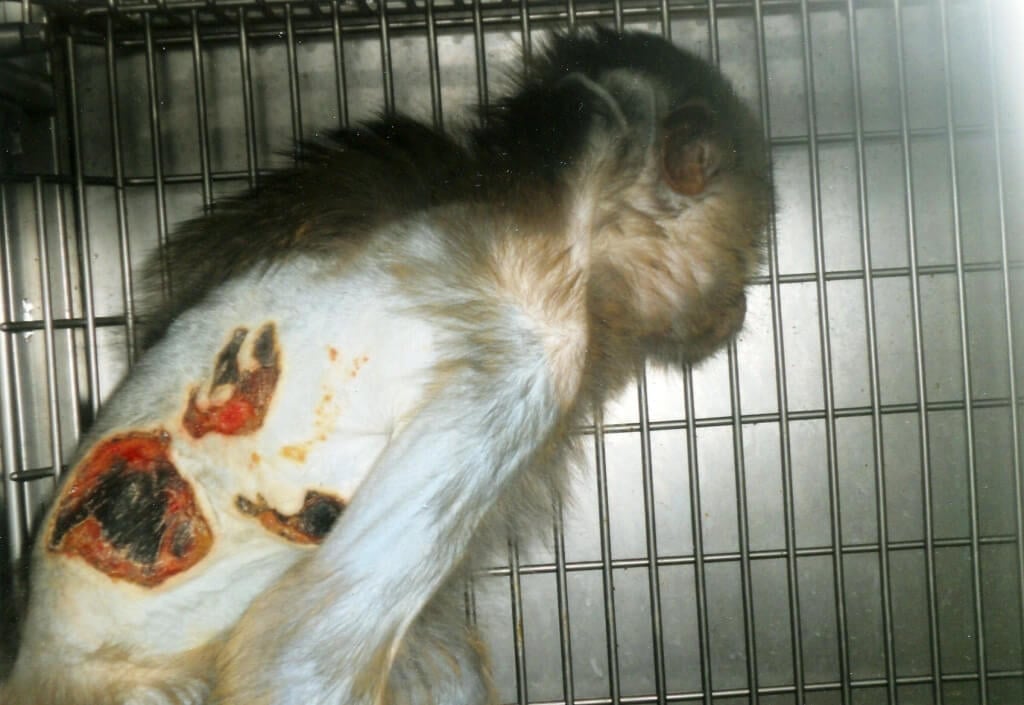Monkey Burned at Stanford University
Stanford University “accidentally” caused a monkey to sustain second-degree burns on her face from a heat lamp while using her in an experiment. The U.S. Department of Agriculture noted in its inspection report, “The improper use of handling techniques, including inappropriate equipment and its proximity to the animal directly caused this injury,” which means that Stanford staff were using a heat lamp—instead of a regular light—to see what they were doing. We hope now they know the difference between the two.
Unfortunately for animals imprisoned in laboratories, this isn’t at all unusual. Experimenters at the University of Utah burned a monkey so badly with a heating device that he had to be euthanized. And at the Centers for Disease Control and Prevention (CDC), workers burned two monkeys with heat lamps and heating pads, causing them to sustain third-degree burns on their arms and backs so severe that their skin peeled off and their muscles began to slough off their bones.

The list goes on: Notorious monkey experimenter Covance was fined $31,500 this year for baking monkeys to death when heating systems malfunctioned and no one noticed. Bristol-Myers Squibb inadvertently scalded a monkey to death in a high-temperature cage washer.
What You Can Do
It’s time to get primates, our closest living relatives, out of laboratories. Please ask your representatives to end experiments on monkeys and to support promising, lifesaving, and relevant non-animal research.

